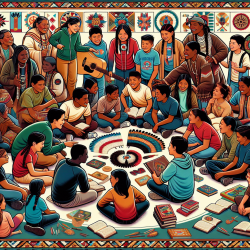Introduction
In recent years, the focus on culturally grounded after-school programs (ASPs) has gained momentum as a means to promote well-being among American Indian and Alaska Native (AI/AN) adolescents. These programs are designed to reconnect youth with their cultural heritage, which has faced historical and contemporary challenges. The research article "Native Spirit: Development of a Culturally Grounded After-School Program to Promote Well-Being Among American Indian Adolescents" provides valuable insights into the development and implementation of such programs.
The Importance of Cultural Engagement
Research indicates that culturally engaged AI/AN youth are less likely to engage in risky behaviors and often exhibit enhanced self-esteem and a healthy sense of identity. The Native Spirit (NS) program, a 13-session ASP, was developed through an academic-community partnership to foster cultural engagement as a form of positive youth development (PYD).
Key Elements of the Native Spirit Program
- Community-Centric Approach: The NS program was developed with the involvement of local cultural practitioners and community leaders, ensuring that it is deeply rooted in the cultural values and practices of the community.
- Positive Youth Development: By focusing on cultural engagement, the program supports the development of positive attributes in youth, such as self-esteem, resilience, and a strong cultural identity.
- Feasibility and Adaptability: The program's partnership with the Boys & Girls Club increased its feasibility and allowed for refinement and dissemination across tribal communities.
Implementation and Evaluation
The NS program was implemented on a Southwest urban-based reservation and involved 13 sessions, each guided by cultural practitioners. The program's evaluation strategy focused on community priorities and utilized Indigenous evaluation principles to ensure cultural relevance and effectiveness.
Challenges and Recommendations
One of the main challenges in implementing culturally grounded programs is ensuring sustainability. The NS program's success relied heavily on community investment and engagement. Future implementations should focus on securing adequate funding and resources, as well as fostering strong community partnerships.
Conclusion
The Native Spirit program exemplifies the potential of culturally grounded ASPs to promote health and well-being among AI/AN adolescents. By centering cultural values and practices, these programs offer a promising approach to addressing health disparities and fostering positive youth development.
To read the original research paper, please follow this link: Native Spirit: Development of a Culturally Grounded After-School Program to Promote Well-Being Among American Indian Adolescents.










